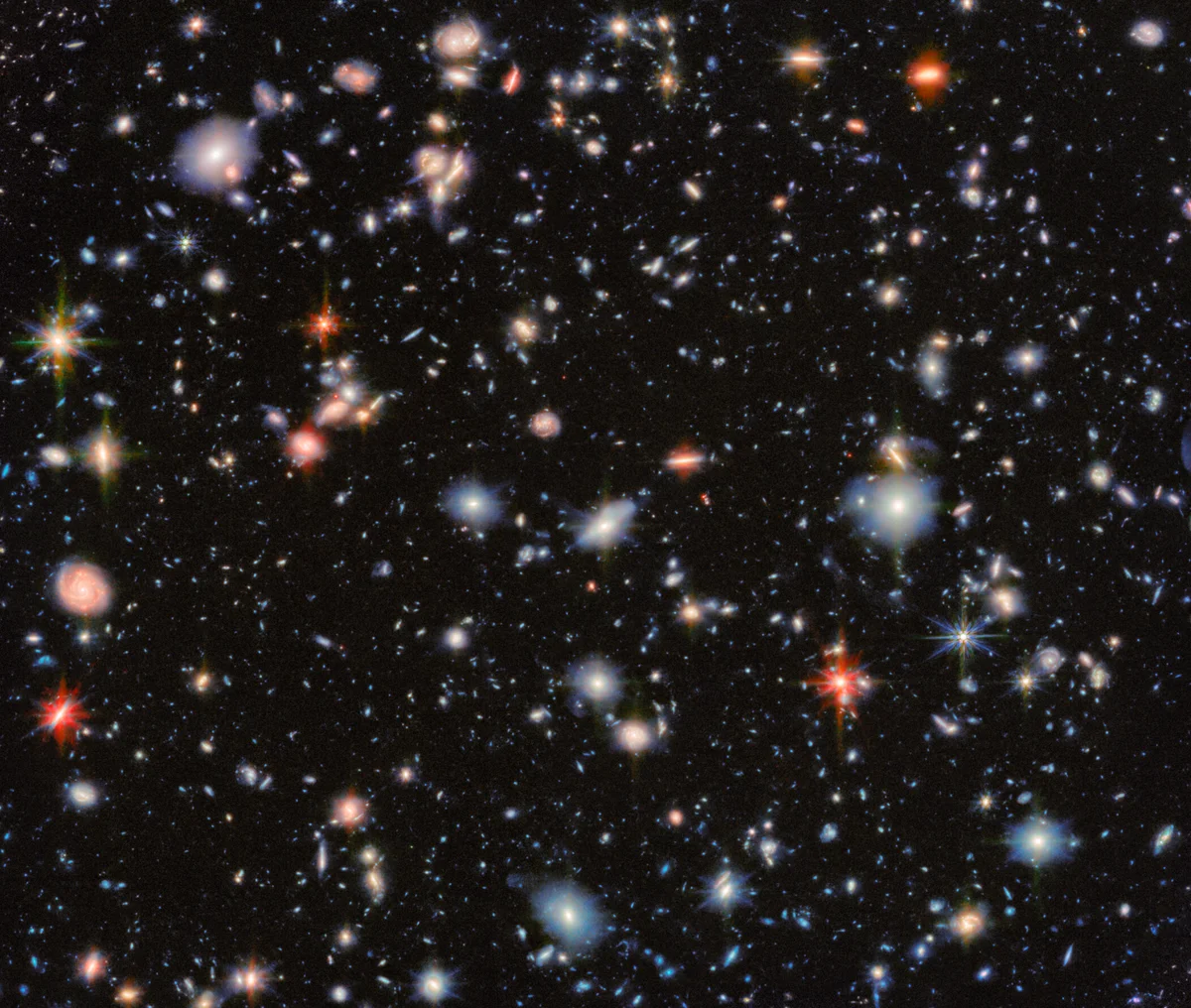
If there is an absolute law in the universe, it’s that nothing can travel faster than the speed of light.
For science-fiction enthusiasts, that’s a bit depressing. Space is big, and while the speed of light is incredibly fast to us humans, on interstellar scales it’s glacially slow. Even at a photon’s speed of about 300,000 kilometers per second, it’s a journey of more than four years to reach just the closest star to the sun.
But we have to be careful how we state this universal law. To be more specific, nothing can move faster than the speed of light through space. That may seem like a nitpick, but it turns out to have literally cosmic importance.
On supporting science journalism
If you’re enjoying this article, consider supporting our award-winning journalism by subscribing. By purchasing a subscription you are helping to ensure the future of impactful stories about the discoveries and ideas shaping our world today.
To see why, we have to look at the behavior of the universe itself. One of the most important things the universe does is expand. It’s getting bigger every day. The foundational observations for this, which were made more than a century ago, showed that distant galaxies appeared to be receding from us—not only that, but ones farther away were moving faster.
That’s what an explosion does: at some time after the bang, the fastest-moving material will be farthest away. This is where the idea of the big bang model for the origin of the universe comes from.
The cosmic expansion can be measured as a rate, meaning at a given distance from us, a galaxy will be moving away from us at given speed. At a different distance, a galaxy will be moving at a different speed. We measure this as a rate of expansion called the Hubble constant. Our best measurements of this give a value of about 70 kilometers per second per megaparsec. In other words, a galaxy one megaparsec from us (about 3.26 million light-years) will be receding at 70 km/sec. A galaxy two megaparsecs away will be moving twice as fast, or at 140 km/sec, and so on.
Extrapolating this, though, runs us into trouble: it’s not hard to see that at some distance from us, the recession speed will equal the speed of light. If you run the numbers, just using the speed of light divided by the Hubble constant, you find that distance is about 14 billion light-years. That distance is called the Hubble sphere, and anything farther away than that would be—from our perspective—moving faster than light.
Here’s where things get weird. (“Oh yes, here is where that happens,” I expect you’re thinking.) The universe is actually quite a bit bigger than that. We know the cosmos was born about 13.8 billion years ago. By some few hundreds of millions of years later, galaxies had formed. When we see the light from a distant galaxy, it’s taken, say, 12 billion years to reach us, but over that time, the universe has expanded. So the light has actually had to travel much farther than 12 billion light-years to get to us. By the time the light reaches us, that galaxy is more like 23 billion light-years away.
That means there are galaxies outside our Hubble sphere, and they are moving away from us faster than the speed of light! How is that possible?
And now we come back to choosing our words carefully. Yes, nothing can move through space faster than light. But those galaxies aren’t moving through space. They’re moving with it.
Because—to belabor this point—space itself is expanding, and that changes everything. The ultimate speed limit only matters for material objects, but space isn’t included in that definition. It can expand at whatever rate it wants, and that means at some distance from us it is expanding faster than light. Galaxies, embedded in the fabric of space, are swept along with it, so past some threshold—in this case, the boundary of the Hubble sphere—they move away from us at superluminal speeds.
An imperfect analogy: Imagine a boat on the ocean that can move across the water at 20 km/hour. If the boat is headed away from you, that’s how fast you’ll see it moving. But now imagine the boat’s in a current moving at 30 km/hour away from you. You’d now measure the boat moving at 50 km/hour, even though the speed of the boat relative to the water is only 20. To be clear, this is only an analogy and shouldn’t be taken too far. But it helps to picture how this works.
So galaxies can move away from us faster than light. But can we see them?
Naively you’d think the answer is no because space is expanding too rapidly for light to catch up to us. But that’s not actually the case. Imagine a galaxy just outside our Hubble sphere. We see it moving away at just faster than light. But from its point of view, the light it emits can easily reach the edge of our Hubble sphere after some time because that edge is not as far from that galaxy. And once that light passes over that distance, it can, by definition, reach us! This means we can in fact see galaxies outside that distance, even though those galaxies are receding faster than light. Incidentally, this also means that from the perspective of galaxies just outside our own Hubble sphere, the Milky Way is moving away from them at superluminal speed. That’s right: from a certain cosmic point of view, you’re breaking a universal speed limit right now, even if you’re sitting motionless in a chair.
Does your head hurt yet? Yeah, I get it. But in fact I’m being quite gentle and hand-wavy about this because it’s all so extremely complex. To truly understand, you have to invoke Einstein’s general theory of relativity, which complicates matters greatly. Relativistic physics describes all this very well, but translating it into words is difficult. It’s like trying to describe a symphony with words alone; you can talk about its volume and pitch, but without hearing the music, those words can’t possibly truly describe it.
It amazes me that so many people not only understand the implications of general relativity but use that physics in their day-to-day life trying to understand the universe’s behavior—a study called cosmology. And it’s more wondrous that someone came up with this idea in the first place. Einstein was pretty smart, it turns out.
But it also took a huge number of astronomers from all over the world working over the past century to get us to where we are now in that cosmic exploration. And we’re still very far from understanding it all. There’s still so much left to learn, and—in an expanding universe—we may never reach its limit.



